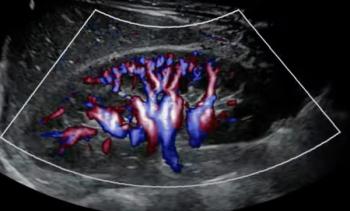
Siemens sharpens strategic focus on emerging IT initiatives
Siemens sharpens strategic focus on emerging IT initiativesSMS reorganization will eliminate 600 jobsSiemens Medical is wasting no time in tapping into the strengths and eliminating the weaknesses of its newest subsidiary, Shared Medical
Siemens sharpens strategic focus on emerging IT initiatives
SMS reorganization will eliminate 600 jobs
Siemens Medical is wasting no time in tapping into the strengths and eliminating the weaknesses of its newest subsidiary, Shared Medical Systems. Siemens' acquisition of SMS became final in early July (HNN 5/17/00), and by August the two firms had already implemented several management changes (HNN 8/23/00).
Now Siemens is reorganizing SMS' U.S. operations, which will ultimately eliminate 600 corporate and field-based jobs and create new business units designed to strengthen the company's focus on emerging strategic IT initiatives. In addition, SMS' Malvern, PA, offices will serve as the worldwide headquarters of Siemens' Healthcare Information Technology business.
The reorganization is also intended to further Siemens' efforts in enterprise medicine and integrated healthcare information products. The company has launched several broad-based data distribution products in the past year (HNN 4/5/00) and is banking on SMS' established presence in healthcare IT to enhance its strategy to become the market leader in integrated image and information management.
"Together, Siemens and SMS are positioned to deliver best practice solutions," said Rik Primo, director of business development at Siemens Health Services. "Our systems support the complex business needs of healthcare providers: reducing costs, expanding accessibility, and ensuring quality care. We call it best practice integration.'"
A major component of this increasingly integrated approach is SMS' well-established application service provider business. The SMS Information Services Center, which handles the company's ASP business, already processes 90 million healthcare transactions a day and claims subsecond response time for its remote customers, which number more than 1000. SMS already offers ASP modules for its HIS and RIS software, and Siemens has been developing an ASP module for PACS for the past two years.
"We want to ensure that we can exceed customer needs by delivering innovative solutions that integrate information from financial and clinical systems with data and images from medical equipment," said Francis Lavelle, president and CEO of SMS. "We're also working on a common system architecture to unify various information systems and modalities."
Siemens has already launched its first ASP PACS product, called e-Archive, and has gone live at the University of Kentucky for remote long-term archiving. Siemens is partnering with Comdisco on this project, which initially is intended to provide remote redundant storage and disaster recovery via the ASP model. The company is using third-party data warehouses in New York and Chicago and plans to add additional locations in San Francisco, Los Angeles, Denver, Dallas, and Atlanta by year's end.
Siemens is also developing an electronic patient record application called Web EPR. The software, which is in beta testing at several European sites, is designed to offer Web-based access to departmental information systems, including laboratory, oncology, and cardiology. It is also another example of the company's strategy to offer products that enable greater access to health information across the enterprise.
"Integrating data captured by PACS, HIS, RIS, and the EPR will give clinicians unprecedented real-time access to patient information for making the best decisions and facilitating care," Primo said. "This integration will allow the radiology department to improve study turnaround times and maximize resources, while providing access to a full complement of patient information during diagnosis."
Search Again Return To HNN Homepage
Newsletter
Stay at the forefront of radiology with the Diagnostic Imaging newsletter, delivering the latest news, clinical insights, and imaging advancements for today’s radiologists.




























